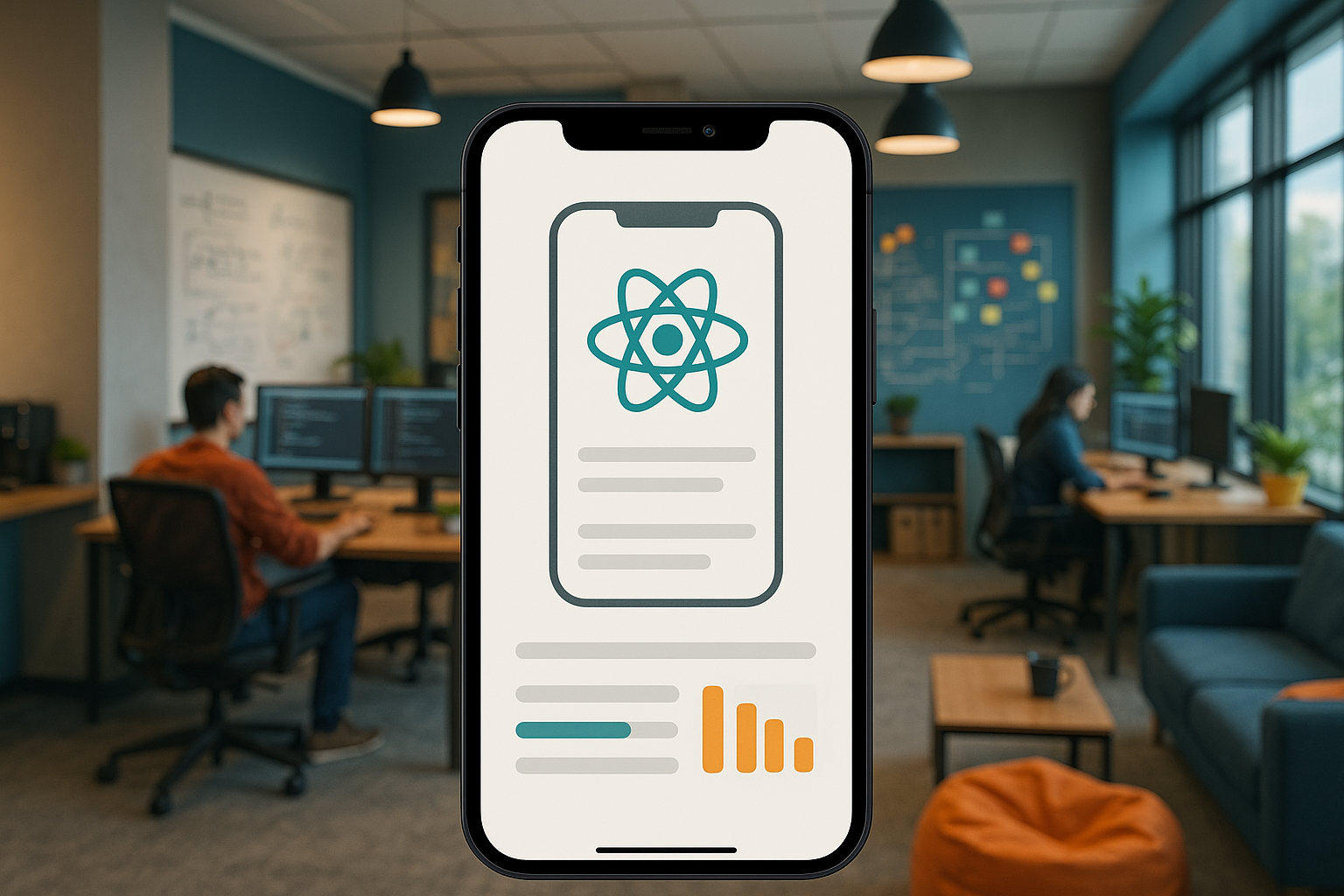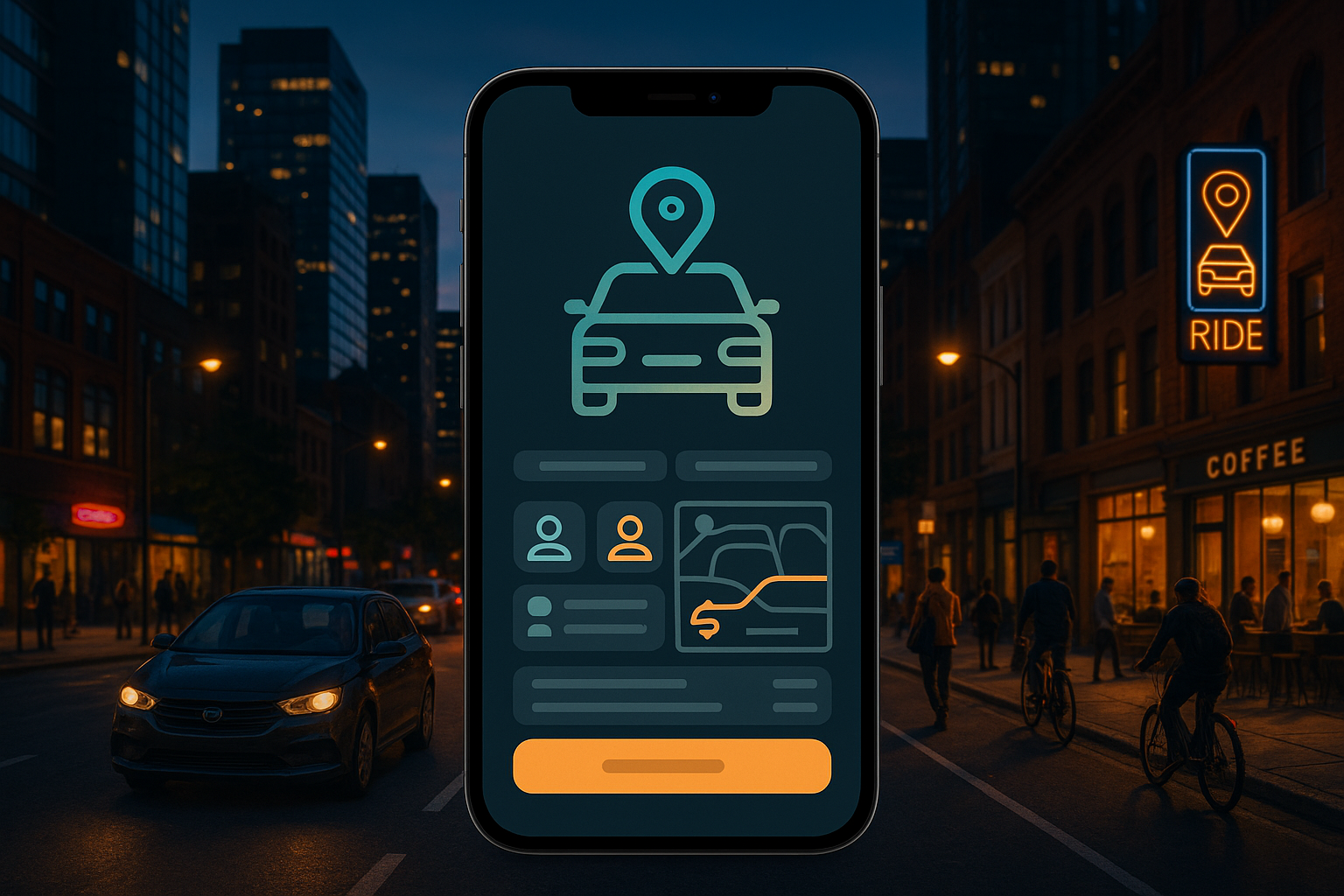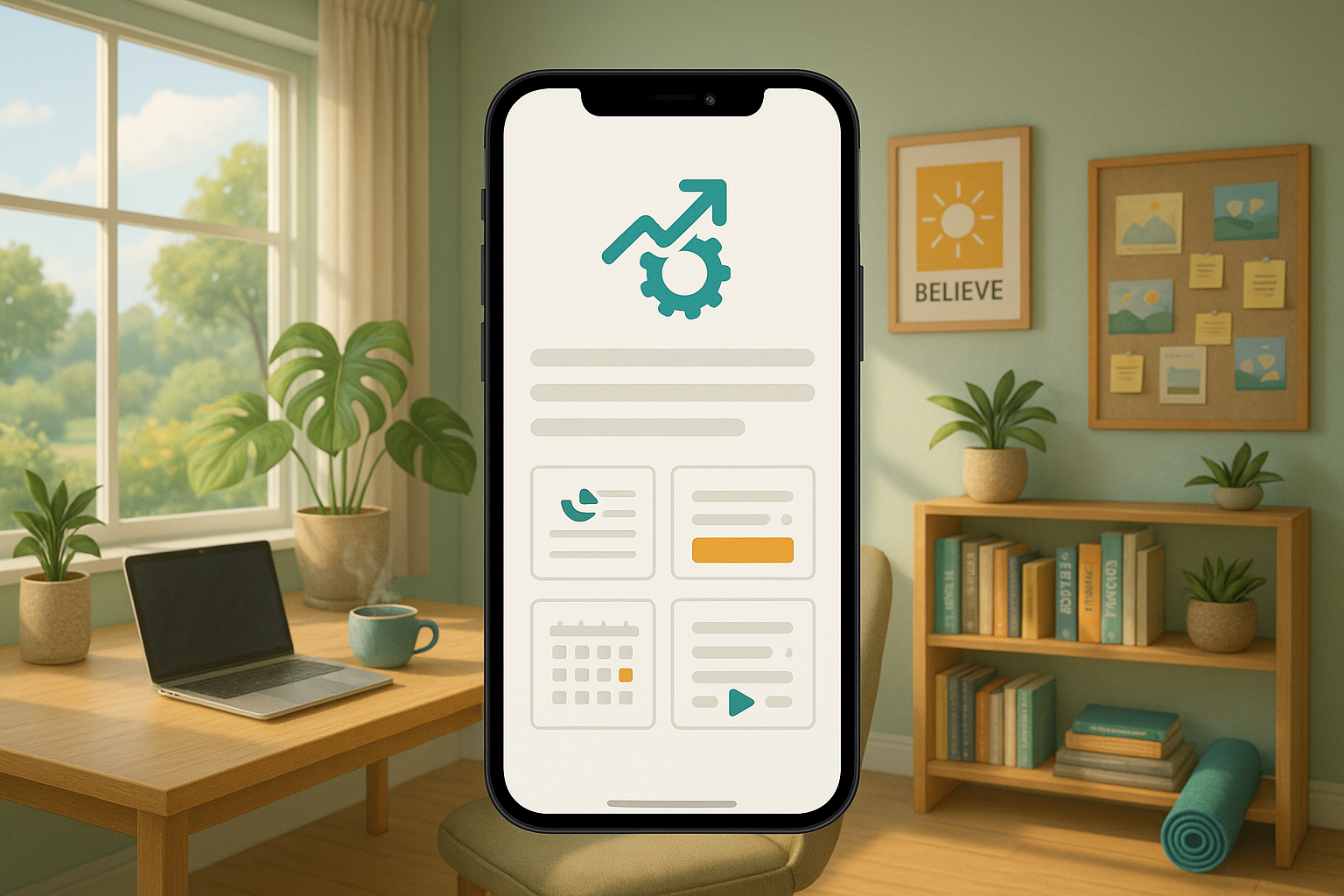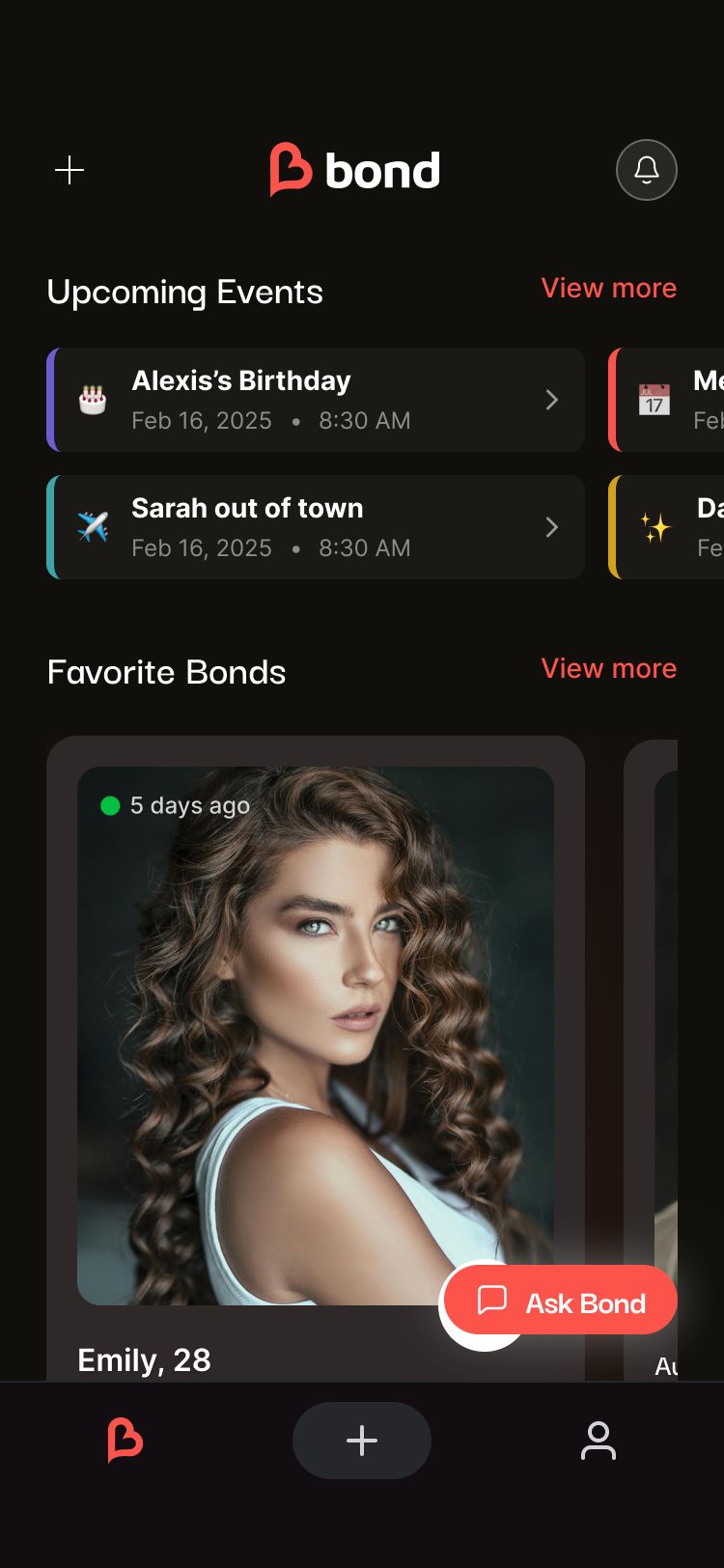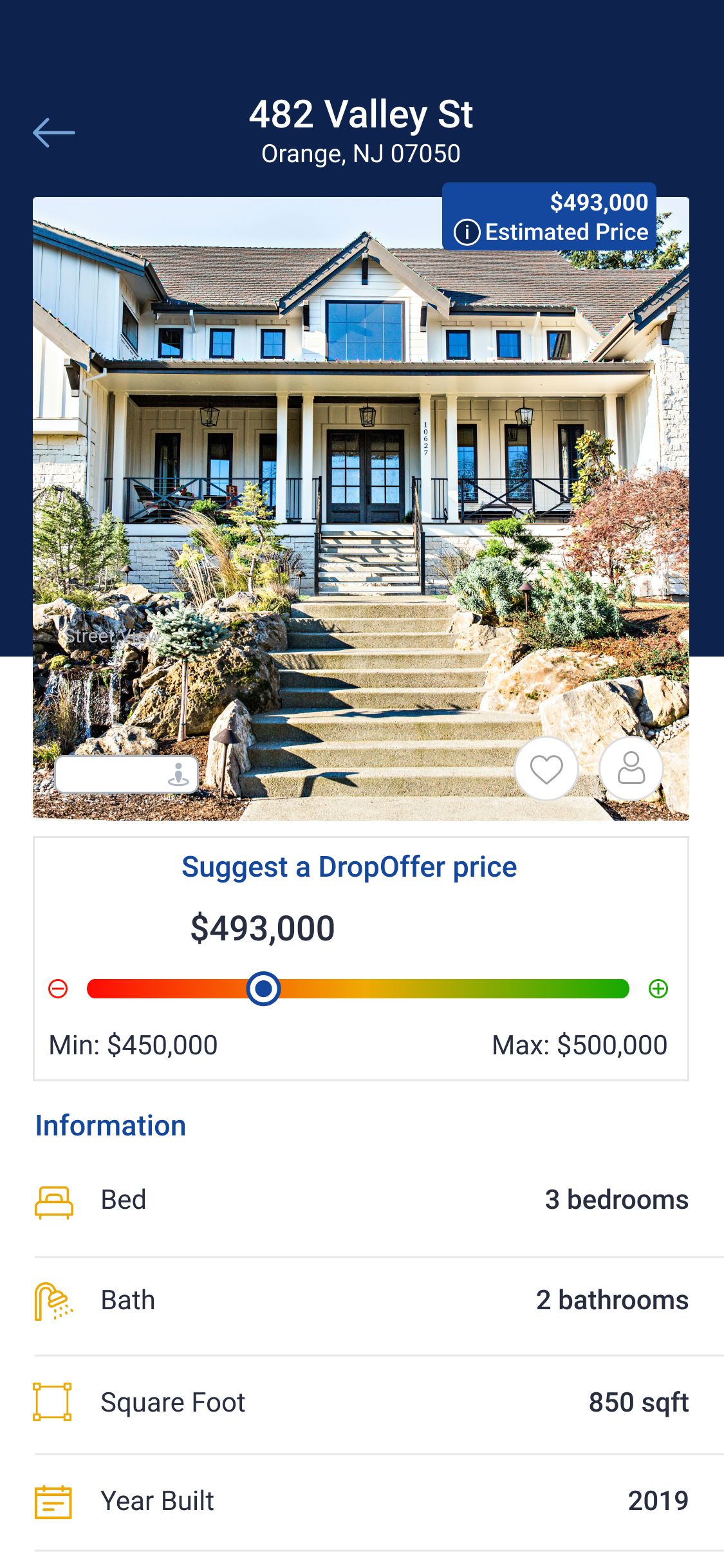Introduction
In today’s fiercely competitive culinary landscape, a restaurant’s success is no longer confined to the quality of its food or the ambiance of its dining room. The digital storefront—your mobile app—has become an indispensable battleground for customer attention, loyalty, and revenue. Diners now expect the convenience of ordering, reserving, and paying from their smartphones. Failing to provide a seamless mobile experience is no longer just a missed opportunity; it’s a direct path to ceding ground to competitors who have embraced digital transformation.
However, the journey from concept to a fully functional, high-performing restaurant app is fraught with complexity. It is far more than simply digitizing a menu. It involves intricate backend integrations with Point of Sale (POS) systems, payment gateways, and kitchen operations; a deep understanding of user experience (UX) design to prevent cart abandonment; and the robust, scalable infrastructure needed to handle the dinner rush without crashing. Many restaurant owners, experts in gastronomy and hospitality, find themselves ill-equipped to navigate the technical maze of software development, leading to costly failures, wasted resources, and frustrating user experiences.
This comprehensive guide is designed to demystify the process of custom restaurant app development. We will explore what a modern restaurant app entails, dissect the significant challenges of attempting to build one in-house, and illuminate the powerful advantages of a custom-built solution. We will also provide insights into development costs and identify top development partners who can turn your vision into a reality.
Throughout this article, we will frame this journey through the lens of our expertise at MetaCTO. As a leading US-based AI-powered app development firm with over 20 years of experience and more than 100 successful apps launched, we have seen firsthand what separates a thriving app from a failed one. We will show you how partnering with a seasoned agency like ours can help you avoid common pitfalls, streamline your operations, and build a powerful digital asset that drives measurable growth for your restaurant.
What is a Restaurant App?
At its surface, a restaurant app is a mobile application that allows customers to interact with a restaurant digitally. However, to view it merely as a digital menu is to miss its profound potential as a central hub for customer engagement, operational efficiency, and brand building. A well-executed restaurant app is a multi-faceted tool that serves as a direct, uninterrupted channel to your most valuable customers.
Fundamentally, a modern restaurant app integrates several core functions into one seamless experience:
- Digital Ordering and Payment: This is the cornerstone. The app must provide an intuitive interface for browsing the menu, customizing orders (e.g., “no onions,” “extra sauce”), and completing a secure payment. This includes options for both delivery and pickup, giving customers flexibility and convenience.
- Loyalty and Rewards Programs: A dedicated app is the perfect vehicle for fostering repeat business. By integrating points-based systems, tiered rewards, or exclusive member-only offers, you can incentivize customers to choose your restaurant over competitors. This transforms a transactional relationship into a long-term, loyal one.
- Reservations and Waitlist Management: For dine-in establishments, an app can dramatically reduce friction. Customers can view availability, book a table for a specific time, or join a virtual waitlist, receiving a notification when their table is ready. This improves the guest experience and helps staff manage floor capacity more effectively.
- Marketing and Communication Hub: The app becomes your most powerful marketing tool. Push notifications can be used to announce daily specials, promote limited-time offers, or send personalized deals based on a user’s order history. This direct line of communication is far more effective and less expensive than traditional advertising.
- Operational Backbone: Beyond the customer-facing features, a great restaurant app integrates deeply with backend operations. When an order is placed, it can be sent directly to the Kitchen Display System (KDS), processed through the POS, and tracked through every stage of preparation and delivery. This automation reduces manual errors, frees up staff from answering phones, and creates a more efficient workflow.
The tangible business impact of a properly developed app is significant. Look at the success of KFC. By investing in a custom app, they achieved a 22% increase in conversion rates, meaning more users who opened the app successfully placed an order. They also saw a 60% increase in repeat purchases, a direct testament to the app’s ability to foster customer loyalty. This success was built on a foundation of proper app development that ensured both high client engagement and improved operational efficiency, allowing them to streamline their delivery process and reduce reliance on costly third-party aggregators. The app’s 4.5 average rating on both major app stores underscores the importance of a polished, user-centric experience.
Reasons it is Difficult to Develop a Restaurant App In-House
While the allure of having complete control over a project is understandable, the reality of in-house app development for a restaurant is often a recipe for disaster. Restaurants are experts in food and service, not in the highly specialized and constantly evolving world of software engineering. Attempting to build a complex application in-house typically presents insurmountable challenges in three key areas: technical complexity, resource drain, and long-term maintenance.
The Quagmire of Technical Complexity
A restaurant app is not a simple, self-contained piece of software. It is the hub of a complex ecosystem that must communicate flawlessly with numerous other systems.
- Intricate Integrations: The app must seamlessly integrate with your existing POS system to process orders and payments. It needs to connect with payment gateways like Stripe or Braintree to handle transactions securely. If you offer delivery, it requires integration with mapping and logistics APIs for driver tracking. Each of these integrations is a complex project in itself, requiring specialized knowledge and rigorous testing to ensure reliability. A single point of failure can bring your entire digital ordering system to a halt.
- Performance and Scalability: Your app must be rock-solid, especially during peak hours. The “Friday night dinner rush” translates to a massive spike in concurrent users, orders, and data processing. An in-house team without experience in building high-traffic applications may design a backend architecture that collapses under the load, leading to lost revenue and frustrated customers. Building a scalable, cloud-native infrastructure that can handle these peaks and valleys efficiently is a non-trivial engineering challenge.
- Data Security and Compliance: When you handle customer data and credit card information, you assume immense responsibility. The app must be architected with robust security measures to protect against data breaches. Furthermore, it must be fully compliant with standards like the Payment Card Industry Data Security Standard (PCI DSS), which involves strict rules for data storage, transmission, and processing. A misstep here can result in catastrophic financial penalties and irreparable damage to your brand’s reputation.
The Prohibitive Drain on Resources
Building a professional-grade app requires a dedicated team of specialists, and the cost and effort of assembling and managing such a team are often underestimated.
- The Talent War: Finding and hiring a single skilled mobile developer is difficult and expensive. Building a full team—including an iOS developer, an Android developer, a backend engineer, a UI/UX designer, and a project manager—is a monumental task for a non-tech company. The competition for this talent is fierce, and their salary expectations are high.
- Skyrocketing Costs: Beyond salaries, there are the associated costs of benefits, hardware, software licenses, and cloud infrastructure. The total cost of an in-house team often far exceeds the budget of a project with a specialized agency. This becomes a significant, ongoing operational expense that diverts capital away from your core business of making and selling food.
- The Experience Deficit: Even if you manage to assemble a team, they will likely lack the specific domain experience of building food-tech applications. They will have to learn the nuances of POS integrations, kitchen workflows, and customer behavior in the restaurant space from scratch. This learning curve inevitably leads to delays, costly mistakes, and a final product that may not meet the mark. An experienced agency has already climbed that curve on other projects.
The Never-Ending Cycle of Maintenance
Launching the app is not the end of the journey; it’s the beginning. Software is not a static asset.
- Constant OS Updates: Apple and Google release major updates to their mobile operating systems every year, often with breaking changes. Your app must be continually updated and tested to ensure it remains compatible, or it will simply stop working for a growing portion of your user base.
- Bug Fixes and Security Patches: No software is perfect. Bugs will be discovered, and security vulnerabilities will emerge. You need a team on standby to quickly diagnose, patch, and deploy fixes to maintain a stable and secure user experience.
- Feature Enhancements: The digital landscape evolves rapidly. To stay competitive, you will need to add new features, refine the user experience, and adapt to changing customer expectations. This requires an ongoing development roadmap and the resources to execute it.
Maintaining a full-time in-house team indefinitely to handle these ongoing needs is simply not financially viable for the vast majority of restaurants. This is where partnering with an agency like MetaCTO provides a sustainable path forward. We provide the expertise needed to build the app right the first time and offer flexible support models to handle maintenance and future growth, allowing you to focus on what you do best.
Why Custom App Development for Restaurants
In a market flooded with third-party delivery platforms and cookie-cutter app templates, the decision to invest in a custom-built application is a strategic move to differentiate your brand and take control of your destiny. While off-the-shelf solutions may seem like a cheaper and faster entry point, they come with significant compromises in branding, functionality, and profitability. Custom development, on the other hand, empowers you to build a digital experience that is a true extension of your unique brand and is perfectly tailored to your operational needs.
Forge Your Unique Brand Identity and User Experience
Your restaurant is more than just the food you serve; it’s the brand, the atmosphere, and the unique experience you provide. A generic, template-based app cannot capture this essence.
- A Bespoke Digital Environment: Custom development allows you to create a user interface (UI) and user experience (UX) that reflects your brand’s visual identity, tone, and personality. From the color palette and typography to the flow of the ordering process, every element can be designed to immerse the customer in your world, not the world of a third-party aggregator. As one of our clients noted, our “UI/UX design expertise really stood out,” a testament to the power of a purpose-built design.
- Optimized for Your Customers: You know your customers best. A custom app allows you to design workflows that cater specifically to their preferences and ordering habits. Whether it’s a highly visual menu for a gourmet restaurant or a lightning-fast re-ordering system for a quick-service cafe, the experience can be optimized to reduce friction and maximize conversions.
Unlock Tailored Functionality and Seamless Operations
Off-the-shelf solutions force you to adapt your business to their software. Custom development allows you to build software that adapts to your business.
- Features Built for You: You are not constrained by a limited feature set determined by a third-party provider. Need a complex, multi-tiered loyalty program? A specialized ordering module for highly customizable pizzas? A unique reservation system that integrates with your private events calendar? Custom development makes it possible to build the exact features that will provide the most value to your customers and your business.
- Deep Operational Integration: A custom app can be engineered to integrate flawlessly with your exact operational setup. It can communicate directly with your specific POS system, your KDS, and your inventory management software. This creates a highly efficient, automated workflow that reduces manual data entry and minimizes errors. As seen with KFC, proper app development leads to enhanced operational efficiency, streamlining processes from the moment an order is placed to the moment it reaches the customer.
Own Your Customer Relationships and Data
When you use third-party aggregators, you are effectively renting their customers. They own the relationship, the data, and the communication channel.
- Direct Line to Your Audience: A custom app puts you back in control. It is a direct channel to your most loyal customers. You can engage them with personalized push notifications, gather their direct feedback, and build a community around your brand. This direct relationship is key to fostering the kind of loyalty that leads to a 60% increase in repeat purchases, as KFC achieved.
- Invaluable Data Insights: With a custom app, you own 100% of the customer data. You can analyze ordering patterns, identify popular items, understand peak hours, and segment your audience for targeted marketing campaigns. This data is a goldmine of business intelligence that is often hidden or completely inaccessible when using third-party platforms.
Escape the Tyranny of Commission Fees
Perhaps the most compelling financial reason for a custom app is the long-term ROI.
- Improve Your Bottom Line: Third-party delivery platforms charge exorbitant commission fees, often ranging from 15% to over 30% of every single order. These fees eat directly into your already thin profit margins. While a custom app requires an upfront investment, it eliminates these recurring commissions. Over time, the app pays for itself by allowing you to keep the full revenue from every order you process. KFC’s strategy to streamline their food delivery and move away from third-party aggregators as much as possible was a deliberate move to improve profitability and control their customer experience. A custom app is the ultimate tool for achieving this independence.
By investing in a custom solution, you are not just building an app; you are building a strategic business asset that drives revenue, enhances efficiency, and secures your brand’s future in the digital age.
Cost Estimate for Developing a Restaurant App
One of the first questions any restaurant owner asks is, “How much will it cost?” The honest answer is: it depends. The cost of developing a custom restaurant app can vary dramatically based on the complexity of its features, the platforms it supports, and the development partner you choose. Viewing this cost not as an expense but as a strategic investment with a significant potential for return is crucial.
To provide a clearer picture, let’s break down the key factors that influence the final price tag:
Core Factors Influencing Development Cost
- Features and Complexity: This is the single biggest driver of cost. A simple application that only displays a menu and contact information will be relatively inexpensive. However, the features that deliver real business value are more complex to build.
- Basic: Static menu, contact information, location map.
- Intermediate: Online ordering, in-app payments, user profiles, order history.
- Advanced: Real-time delivery tracking, custom loyalty and rewards programs, deep POS/KDS integration, personalized recommendations powered by AI, multi-location support, and advanced analytics. Each of these features adds layers of complexity to both the frontend and backend development.
- Platform Choice (iOS, Android, or Both): Do you need an app for the iPhone, for Android devices, or for both?
- Native Development: Building separate, native apps for iOS and Android provides the best performance and user experience but is the most expensive approach as it requires two distinct codebases and development teams.
- Cross-Platform Development: Using frameworks like React Native or Flutter allows developers to write code once and deploy it on both platforms. This can reduce costs and development time significantly, but may come with slight performance tradeoffs for highly demanding applications.
- UI/UX Design: The quality of the design directly impacts user satisfaction and conversion rates. A visually appealing and intuitive app requires significant investment in a professional design process.
- Template-Based: Using pre-made templates is cheaper but results in a generic look and feel.
- Custom Design: A fully custom design process involves user research, wireframing, prototyping, and creating a unique visual identity that aligns with your brand. This is more expensive but essential for a premium, differentiated product.
- Backend Infrastructure and API Integration: The “brains” behind the app—the server, database, and APIs—are often the most complex and costly components. This backend needs to be secure, scalable to handle traffic spikes, and integrated with numerous third-party services (payment gateways, POS systems, mapping services, etc.).
- Development Team: The location, size, and experience of your development partner will heavily influence the cost. A top-tier, US-based agency with a proven track record will command higher rates than a small freelance team overseas, but they also bring strategic expertise, reliability, and higher-quality results.
Realistic Cost Ranges
With these factors in mind, we can outline some general budget ranges for custom restaurant app development:
| App Tier | Estimated Cost Range | Key Features |
|---|---|---|
| Basic MVP | $50,000 - $80,000 | Digital menu, simple online ordering (pickup only), basic user accounts, contact/location info. |
| Standard Feature-Rich App | $80,000 - $150,000 | Everything in MVP, plus delivery integration, secure in-app payments, loyalty program, push notifications, POS sync. |
| Complex Enterprise App | $150,000+ | All standard features, plus real-time driver tracking, AI-powered recommendations, multi-location management, custom KDS integration, advanced analytics dashboard. |
At MetaCTO, we understand that this is a significant investment. That’s why we emphasize a strategic approach to development. Our 90-day MVP service is designed to help you launch a core version of your app quickly and efficiently. This allows you to get to market, start generating revenue, and gather real user feedback before investing in more advanced features, ensuring your investment is guided by data and focused on ROI.
Top Restaurant App Development Companies
Choosing the right development partner is the most critical decision you will make in your app development journey. The right agency brings more than just coding skills; they bring strategic insight, industry experience, and a proven process for success. Here are some of the top companies to consider for your project.
1. MetaCTO
As a premier US-based app development firm, we at MetaCTO stand at the forefront of creating high-impact mobile applications for businesses ready to lead their industries. With over 20 years of experience and more than 100 successful apps launched, we combine deep technical expertise with a strategic, business-first approach to ensure your restaurant app is not just a functional piece of software, but a powerful engine for growth.
Our process is built on a partnership model. We begin with a free Product Strategy Roadmap to align on your business goals, identify key challenges, and define a clear path to success. Our expertise in mobile app development covers the full lifecycle, from a user-centric design philosophy that has earned praise from our clients to building robust, scalable backend systems that can handle the rigors of a busy restaurant.
What truly sets us apart is our capability in AI development. We can integrate sophisticated features like AI-powered recommendation engines that personalize the menu for each user, intelligent chatbots to handle customer inquiries, and predictive analytics to help you forecast demand. This level of innovation transforms a standard ordering app into a smart, adaptive business tool. Our track record, trusted by brands like Liverpool FC and the Carlyle Group, and our perfect 5.0-star rating on Clutch, speak to our commitment to delivering excellence.
2. Orangesoft
Orangesoft is a development agency known for its structured approach to building mobile applications. They have experience working with a variety of industries, including food-tech, and are recognized for their focus on transparent project management and consistent communication, ensuring clients are kept in the loop throughout the development lifecycle.
3. Cubix
Cubix is a large development firm that handles a wide range of software projects, including mobile apps, games, and enterprise software. They have a sizable team of developers and designers capable of tackling complex projects with extensive feature requirements. Their portfolio showcases work across numerous sectors, demonstrating their versatility in adapting to different business needs.
4. Intellectsoft
Intellectsoft is an established digital transformation consultancy that offers end-to-end development services. They often work with large, enterprise-level clients to build complex software solutions. For restaurants that are part of a larger franchise or corporate group, Intellectsoft’s experience in enterprise-grade security, scalability, and integration can be a significant asset.
Conclusion
The digital transformation of the restaurant industry is no longer on the horizon; it is here. A custom mobile app has evolved from a novelty into a fundamental component of a successful modern restaurant. It serves as your digital front door, your most effective marketing channel, and a powerful tool for streamlining operations. As we’ve seen from the success of major brands like KFC, a well-executed app can drive staggering results: increased conversions, dramatically improved customer loyalty, higher user satisfaction, and greater operational efficiency.
Throughout this guide, we have explored the multifaceted nature of a restaurant app, moving beyond a simple menu to a comprehensive business hub. We have detailed the significant technical and financial hurdles of attempting to build such a complex system in-house, highlighting why a specialized development partner is often the most prudent path. We’ve also underscored the immense strategic advantages of a custom-built solution—from owning your brand identity and customer data to escaping the crippling commission fees of third-party aggregators.
Building a successful restaurant app is a significant undertaking, but it is one that holds the key to unlocking new levels of growth and profitability. The journey requires a clear vision, a strategic plan, and an expert partner with the technical prowess and industry experience to navigate the complexities of development. You don’t have to do it alone. Our team at MetaCTO has spent over two decades helping businesses like yours transform ideas into market-leading applications. We have the experience and the proven process to guide you from concept to launch and beyond.
Talk with a Restaurant app development expert at MetaCTO today to discuss your vision and learn how we can help you build a custom app that delights your customers and delivers real business results.

